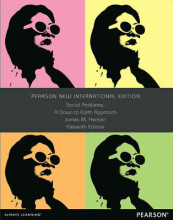Crime and criminal Justice
6 important questions on Crime and criminal Justice
Symbolic interactionism on Crime
social class influences the reactions of authorities
What are illegitimate opportunity structures:
How do functionalists view crime:
- Higher grades + faster learning
- Never study anything twice
- 100% sure, 100% understanding
What do conflict theorists say about the criminal justice system
What is white collar crime:
Explain the 4 policies that are being used now for dealing with crime
A form of retribution is restitution (teruggave) paying the victim back.
2. Deterrence: purpose is to make people afraid of the punishment > won't commit crime.
3. Rehabilitation: resocialize offenders
4. Incapacitation: putting in jail.
The question on the page originate from the summary of the following study material:
- A unique study and practice tool
- Never study anything twice again
- Get the grades you hope for
- 100% sure, 100% understanding





























